I am going to share how to cook rice, the Japanese way that my father taught me. My father knew how to cook absolutely perfect, Japanese plain steamed rice.
Which Rice? What types of Rice?
Short grain Japonica preferably, “Koshihikari”. If you can get “Koshihikari” this is the rice I would buy. If there are Japanese or Asian grocery stores near you, get Koshihikari. They are not cheap compared to the other types of rice, like Jasmine rice or long grain rice. See below for options in US.
Koshihikari rice is Low GI(48)
Generally speaking, many rice GI values are quite high. Although Koshihikari is not. Koshihikari is actually low GI and it’s GI value is 48. So I continued to consume koshihikari rice when I was on low GI diet.
Fluffy Rice is a big NO NO
Japanese people love anything fluffy, like fluffy pancake and fluffy bread. But never ever fluffy rice. Perfectly cooked rice is shiny and firm but perfectly cooked through. It is like how the Italians fuss about cooking pasta al dente professionally.
My surprise to see how the rice is cooked in Australian households
I came to Australia about 20 years ago. Everything is so big and spacious, with friendly people. I fell in love instantly with Australia except for one thing, the way people cook rice. It was my jaw dropping moment when I saw they cook rice in a saucepan with a lot of water, and draining the water when the rice is cooked with sieves. What!?
How Japanese people cook rice at home?
Japanese people are so big on cooking delicious rice. There are so many great rice cookers available in Japan. In Japan, Rice is cooked mainly in Rice Cookers. There are some trends and it is popular to cook rice in clay pots too.
My father’s tips on how to cook perfect rice, the Japanese way
No matter what you use to cook rice, whether you use a rice cooker or clay pot or Staub Cast Iron rice cooker. I always follow my Dad’s tips.
Rice and water ratio is 1:1
It does not have to be a proper measurement cup. I even use a mug. One mug of uncooked rice, and using the same mug, add the mug of water to pour in.
Wash and rinse until the washing water becomes clear
Never ever open the lid
You need to be patient even though it is hard to resist. Do not open the lid, because opening the lid lets out the built up steam. So for that reason, do not open the lid.
Allow 10 minutes after the heat is turned off
After the heat is turned off, allow 10 minutes so the rice is cooked further with remaining steam.
Turn the rice gently from the bottom
How to store the leftover rice
Cooking more rice yields a better result. So I usually cook a minimum 2 cups of uncooked rice. Divide the leftover rice to the amount you will eat at a meal. Wrap them gently with cling wrap while it is still warm, place them in a ziplock freezer bag and freeze them. It will keep for about a month.
Koshihikari Available in US
Affiliate disclaimer
The site and our mobile application may contain links to affiliate websites, and we receive an affiliate commission for any purchases made by you on the affiliate website using such links.
We are participant in the Amazon Services LLC Associates Program, an affiliate advertising designed to provide a means for us to earn advertising fees by linking to Amazon. com and affiliated websites.
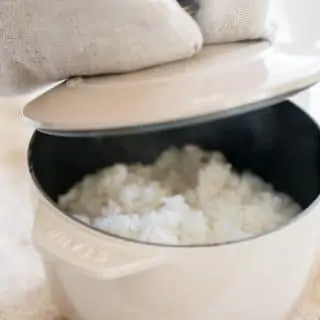
How to cook rice, The Japanese way
Instructions
Using Rice Cooker
- Wash rice thoroughly until the washing water become clear in a large bowl.
- Drain the washing water completely.
- Place washed rice and water into the rice cooker.
- Follow the instructions of your rice cooker now.
- When the rice is cooked, turn the rice from the bottom few times.
- If there is leftover, wrap the rice with cling wrap and place them in a zip lock freezer bag and freeze them.
Using a clay pot or cast iron cooker
- Wash the rice thoroughly until the washing water becomes clear in the clay pot or a cast iron cooker that you are going to use for cooking rice.
- Drain the washing water completely, and add the equal amount of water to cook.
- Place a lid on and start to heat, over high heat.
- Once it starts to boil, turn the heat down to low medium. From this point, never open the lid, and cook a further 15 minutes.
- Turn the heat off and let the rice cook in the remaining steam inside the cooker for 10 minutes.
- Open the lid and turn the rice a few times from the bottom.
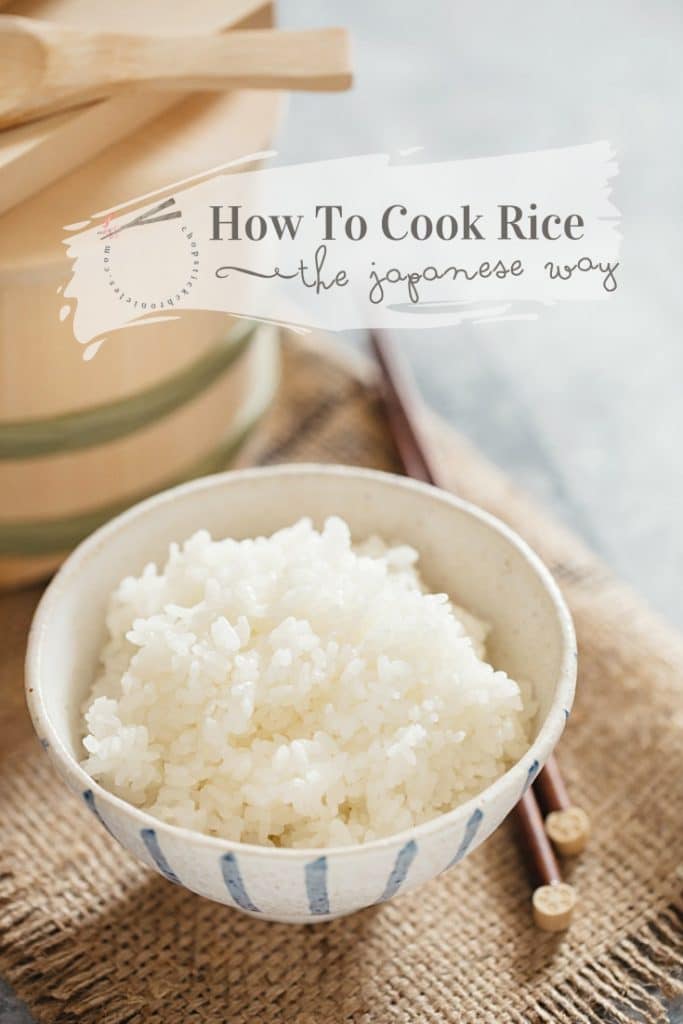
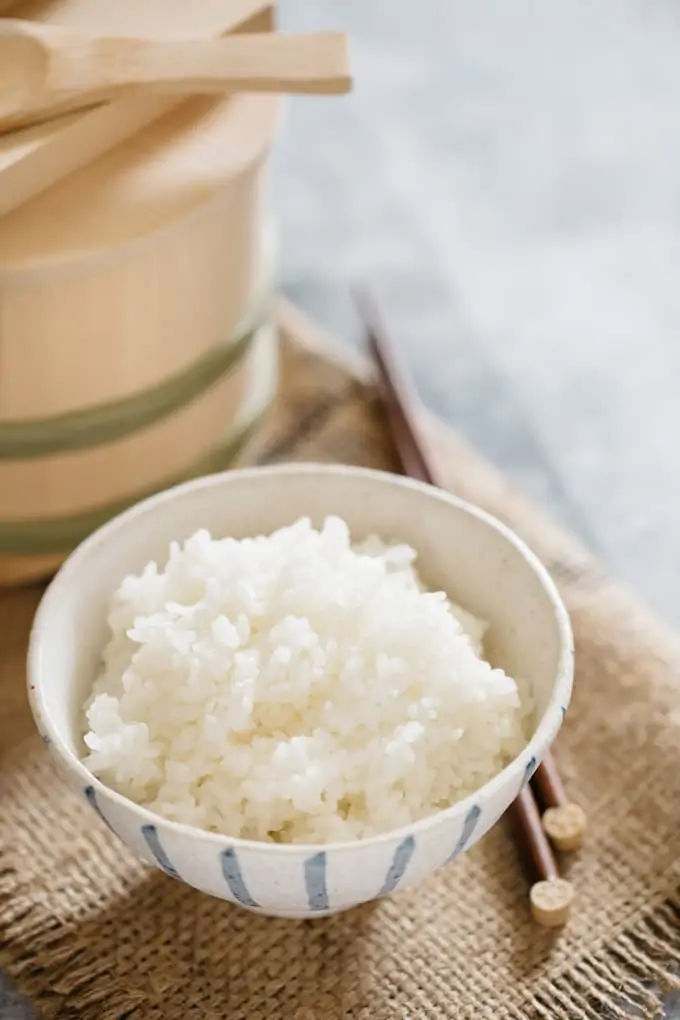
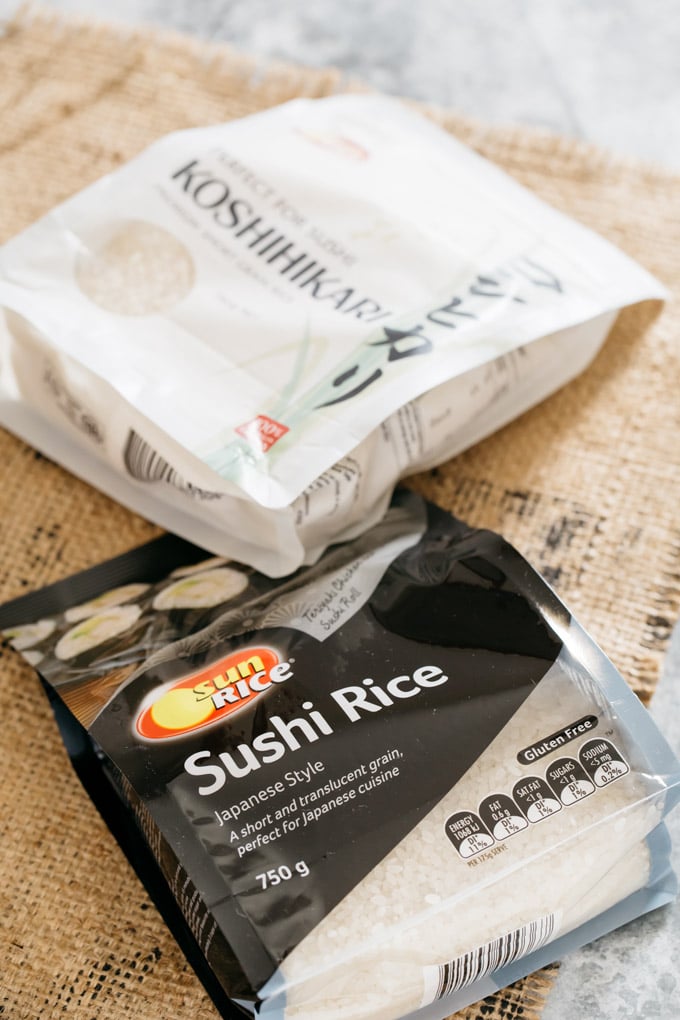


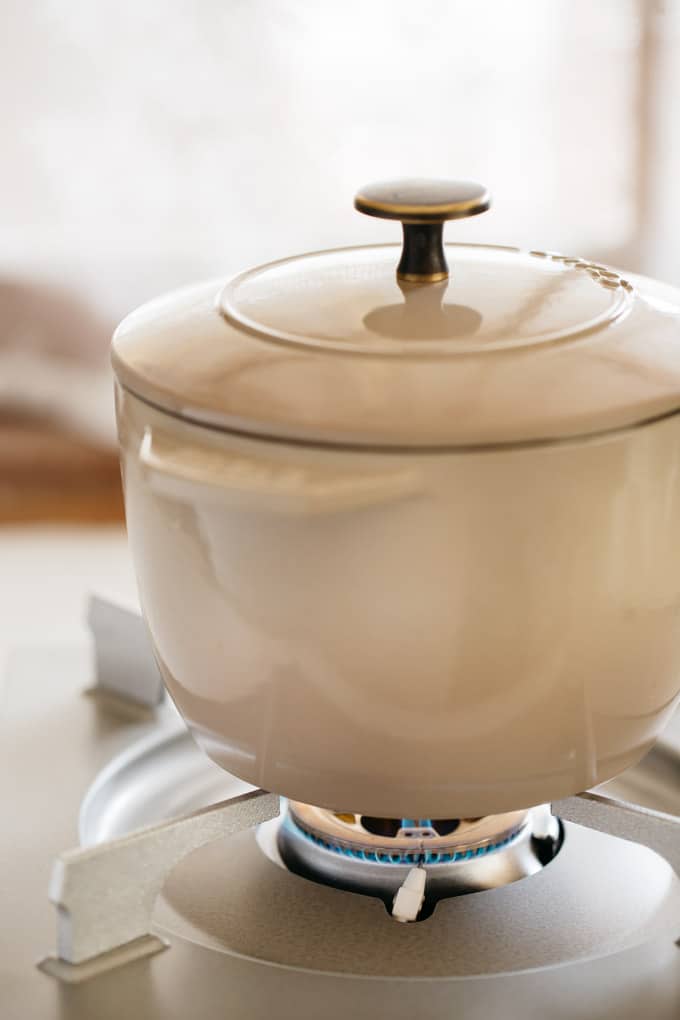
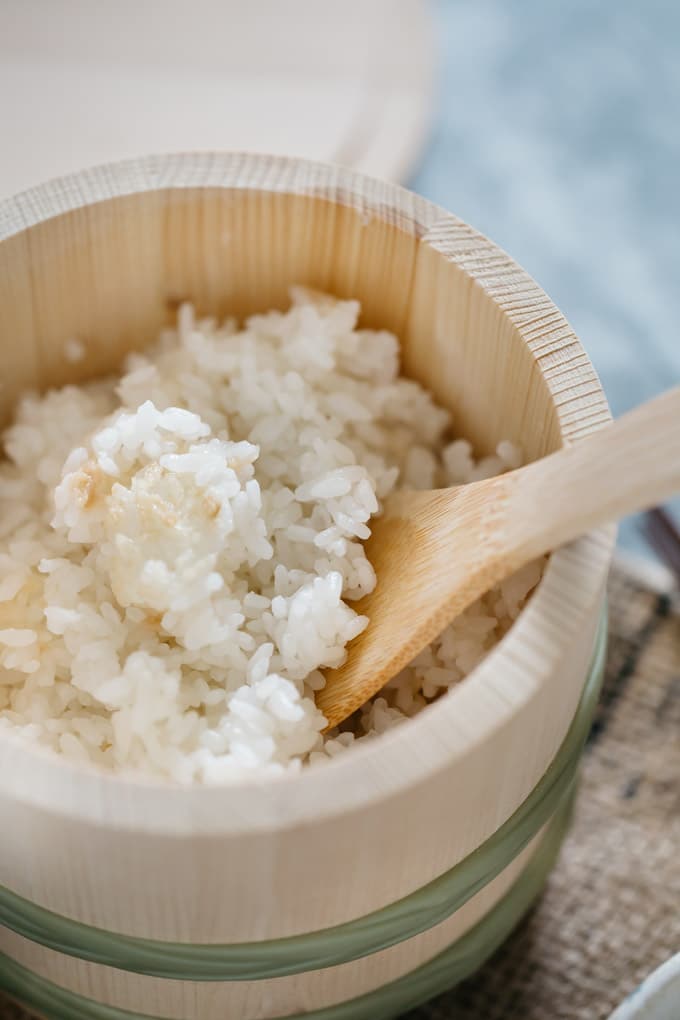
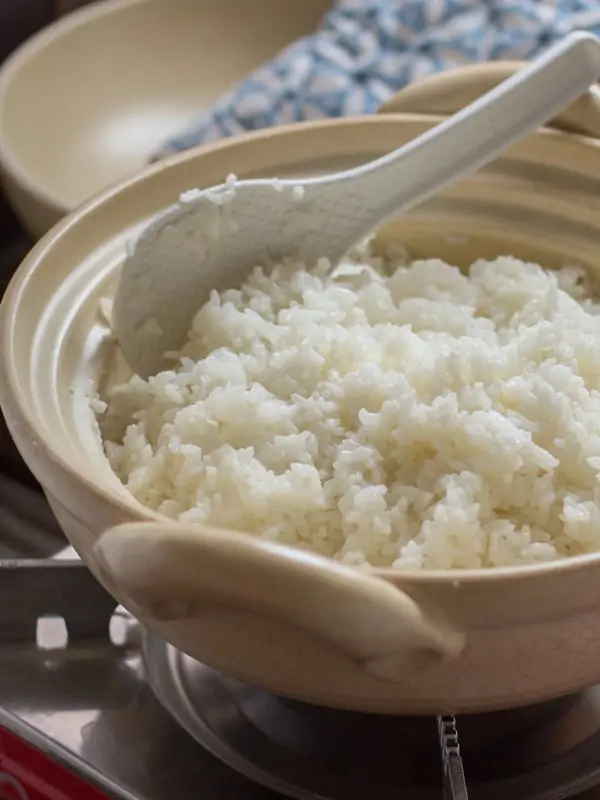


I’ve been using this recipe for over a year now, it was time to say thank you. My rice always comes out perfectly following these simple methodical steps. So thank you very much for sharing 🙂
Hi Thank you Liam for your lovely comment and 5 star rating 😀
Hello! I just found your website & I love it!
I have been searching for your rice pot online & found it! It is offered in 3 different sizes: 12cm, 16cm & 20 cm (diameter measured at the top). Which size is yours, please?
Thank you,
joal
Hi Joal, mine is 16cm 😀
what color is the staub rice pot that you used? is it cream? thankyou
Hi Seu, sorry I can not remember but it was some kind of special grey colour that I bought it in Japan.
perfect rice every time
May i know what size of your staub rice pot? Tq
Hi Habibaty, I think it is small.
Hi Shihiko,
The recipe looks good. Will the rice get stuck at the bottom of the Staub Pot thus wasting some rice?
Thanks,
Amelia
Hi Amelia, no it does not if you are careful with heat control 😀
Well Amelia, obviously it will stick unless you invest a better cooker which is non stick secondly not enough water. I can tell you cant cook , better spend more time cooking.
Lol! Well that was both rude AND an impressive self-own! I can tell you can’t cook b/c enamel cast iron Staub gear is a serious investment, coveted by professional chefs & far superior to the non stick garbage you’re suggesting.
Nice effort rookie
shut up richard
@cia 😂😂 thank you. Your comment truly tickled me.
Also this is a great recipe.
Thanks for the recipe! I’m gonna try it for tomorrow’s lunch.
Thank you Miku 😀
You do not soak the rice like I have seen in other japanese rice recipes, is there a reason for that? I like Tamaki Gold California Koshihikari rice very much, Seshuu-Mai Koshihikari not so much, Seshuu-Maiit has the smallest rice grain I have ever eaten and I find the mouth feel kinda of strange becuse of the tiny grain size!
Hi Solis, yes if you soak it, the grain absorb water and you need to change the amount of water to cook with.
Hi!
This worked out great, I used my le Cruset pot and for the first time in my life I am happy with the rice. It worked better than my Swiss made rice cooker, where I get a scorched bottom and mushy rice. Thanks so much for posting this recipe.
Monica
Hi Shihoko, before put rice in plastic wrap and fridge, should I cool the rice?
Hi Momo yes 😀
Hi Shihoko- I am interested in trying out your onigiri recipe. I am wondering if I can freeze the onigiri like you can freeze the rice here? Also, once you have frozen the rice, how would you warm or thaw it? Thank you for your very well detailed recipes.
Hi Giseslle, yes you can freeze onigiri rice balls. I would freeze without nori wrapped though. You can thaw back in room temperature or microwave 30sec-1 min.Every microwave is different so you need to adjust the time 😀
Hi Shihoko!
Just wanted to say thank you for this recipe, I had been struggling to get perfectly firm japanese rice and it would always end up on the mushy side. Made the change today and it was spot on!
You are welcome Natalia 😀
Shihoko san,
1st thing cought my atention is the small pot.. 😊
Where can we get that?
Sumimasen.. 😊
Keep posting good recipe’s..
Hi Arnel Tereso Ruiz san 😀 I boughthe it in Japan, though it is “satub” french brand and they are available world wide online.
this is strange – i have been cooking rice using this steam or absorption method for 20 years but i always use a 2:1 ratio, water to rice. Bring to a simmer, clap the lid on and heat turned down to lowest possible. 15 minutes for white and 40 mins for brown. No peeking! At end of this, put a clean tea towel under the lid and allow to stand for 5-10 minutes. I have always had beautiful rice and none of that horrible draining thru a sieve.. How can it work with half the amount of water?!! Could it be because i am nearly always using basmati? Either white or brown? Does japanese rice just need less water?
Hi Cam, yes I think so. I usually cook Japonica rice called “Koshihikari” which is quite different from Basmati rice.